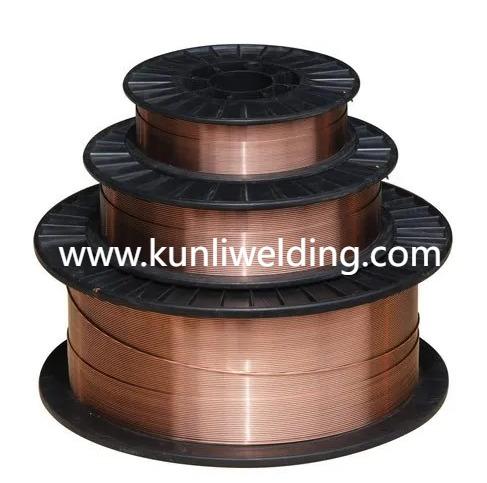-
Web sayfası bildirimcisi
- EXPLORE
-
Blogs
-
Forums
Are Aluminum Tig Wire Suppliers Offering The Right Handling Guidance Now

In metalworking shops where arc quality and repeatable results matter, reviews from experienced fabricators shape buying choices, and that is why many procurement teams read what Aluminum Tig Wire Suppliers hear from users before they place an order. Professionals point to feedability, wire chemistry, packaging and vendor support as the practical signals that separate useful spools from trouble in the shop.
Why do real user reports matter more than glossy product pages when choosing a filler? Professionals operate under changing constraints such as tighter weight targets and evolving environmental rules that affect material selection and finishing. Review commentary often cuts through marketing to reveal which wires hold a stable arc on thin panels which ones feed cleanly through common feeders and which arrive ready to weld without extra conditioning. Those candid notes save time during qualification and reduce wasted material when teams must ramp up quickly.
What are the recurring themes in welder feedback about TIG wires and why should they influence procurement? Welders often describe consistency of chemistry as a baseline expectation. That means each spool performs like the last so operators do not chase shifting parameters. Comments about spool finish and surface condition also recur because oxidized or contaminated wire can create porosity and cause costly rework. Finally, users value clear handling guidance that shows which joint types and shielding options suit a given alloy. When suppliers provide those details, adoption moves faster on the shop floor.
How do current industry pressures change the way welders evaluate brands? Supply disruptions and attention to lifecycle footprints have pushed fabricators to ask tougher questions about traceability and packaging. Reviews from professional welders increasingly mention whether spools are sealed against moisture how the wire is wound and whether documentation is included with shipments. Those seemingly small items matter because soft aluminum wires are sensitive to handling and even small defects in packaging can create feed problems later on.
What practical points do welders raise about arc behavior and deposit characteristics? Experienced TIG operators tend to emphasize control during starts and ends of beads. They want wires that produce predictable puddles across manual and mechanized stations so that bead profile and fusion are repeatable. Comments about how a filler interacts with finishing processes also appear frequently because some fillers respond differently to anodizing or coating. When a welder reports that a wire preserves ductility and resists cracking in service conditions those notes carry weight for structural applications.
Which vendor services appear in positive customer reviews and why do they help shops adopt new wires? Suppliers who include handling notes packaging options and sample deposit reports reduce the qualification time that shop engineers must invest. Professional feedback often praises vendors that respond with practical troubleshooting guidance when feed snags or porosity emerge in early runs. That hands on support shortens the path from sample to production use and helps maintenance teams avoid repeated changeovers that disrupt schedules.
What are common complaints found in user feedback and how should buyers respond? Complaints tend to focus on three areas: inconsistent spool finish, inadequate packaging and sparse technical guidance. Buyers can counter these risks by asking suppliers for batch handling notes representative weld samples and proof of packaging methods that protect soft wires from moisture and deformation. Including those checks in purchase orders turns subjective feedback into objective acceptance criteria.
How do professionals test and validate a new TIG wire before committing to large buys? A short validation program that mirrors production joint geometry and finishing expectations is a frequent suggestion in user reviews. Welders recommend running sample assemblies through the same feeders and termination hardware used in production and then checking finish technicians responses to weld appearance under finishing conditions. When this process is captured in a simple checklist procurement avoids surprises and operational teams keep control of ramp up timing.
Which practical traits should procurement teams ask for when they compare supplier claims? Specify handling guidance on the purchase order request representative weld deposits and ask about spool formats and liner compatibility with your feeders. Require documentation that shows how the wire is wound and sealed and whether the supplier offers controlled packaging options for long shipments. These supplier deliverables are the very items that professional reviews mention when praising consistent field performance.
Why do community reviews matter in a market that is under pressure from innovation and regulation? When design teams choose lighter structures or when operators face new environmental treatment steps, peer feedback highlights which wires respond well to those shifts. Professional reviewers who report steady performance under real duty cycles provide practical confidence for procurement and engineering groups that must balance speed and reliability during product changes. That field tested confidence often weighs more than single lab reports.
If you want to compare product notes and handling guidance from a supplier that publishes alloy pages and application resources examine manufacturer product listings and technical notes that accompany their offerings. Those materials make it easier to match shop realities to spool attributes and to incorporate buyer requested handling checks into procurement routines. For detailed product pages and alloy guides consult the catalog entry at https://www.kunliwelding.com/product/aluminum-alloy-wire/aluminum-alloy-welding-wire.html .
- Art
- Causes
- Crafts
- Dance
- Drinks
- Film
- Fitness
- Food
- Oyunlar
- Gardening
- Health
- Home
- Literature
- Music
- Networking
- Other
- Party
- Religion
- Shopping
- Sports
- Theater
- Wellness


